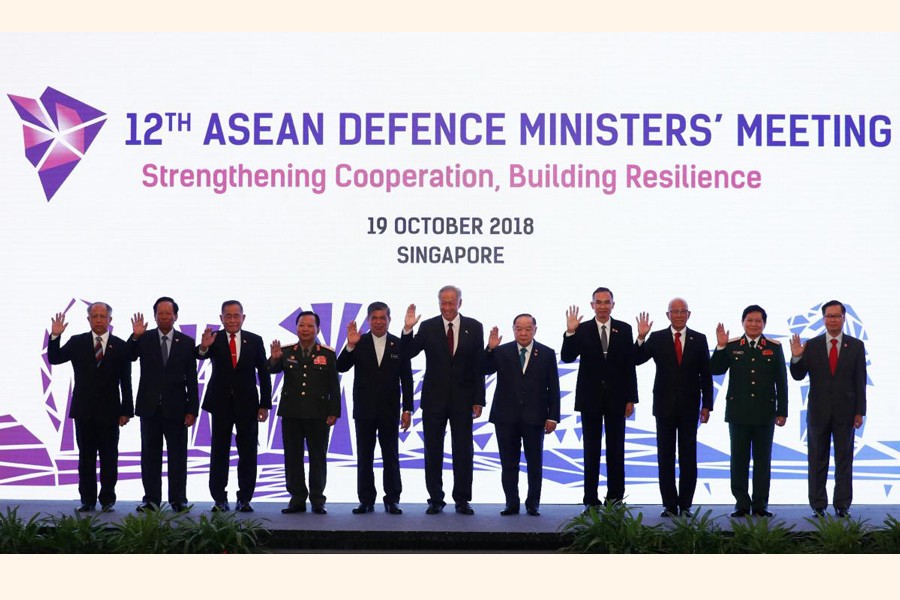Southeast Asian countries agreed on Friday to guidelines to manage unexpected encounters between their military aircraft, with host Singapore calling the pact a world first and saying they would encourage their international partners to join, reports Reuters.
The agreement, signed by defence ministers of the 10-member Association of Southeast Asian Nations (ASEAN) at a conference in Singapore, includes a region-wide pact on the exchange of information on terrorism threats.
The voluntary, non-binding guidelines on air encounters build on an existing code to manage sea encounters adopted last year by ASEAN and its "plus" partners - Australia, China, India, Japan, New Zealand, Russia, South Korea and the United States.
"I am happy to announce the first multilateral guidelines for air encounters between military aircraft have been adopted," Singapore's defence minister, Ng Eng Hen, told a news conference.
"This is a significant achievement."
The ASEAN ministers will meet their eight international partners on Saturday and Ng said they would "seek their agreement" on the guidelines.
The framework for the guidelines said a pact was needed because Asia's rising growth and prosperity had spurred an increase of maritime and air traffic in the region.
The United States and China in 2015 signed a pact on a military hotline and rules governing air-to-air encounters.
But even with the existing guidelines, tensions remain, especially in the hotly contested South China Sea.
China claims almost all of busy waterway while Vietnam, the Philippines, Malaysia and Brunei claim parts of the potentially energy-rich maritime territory.
Taiwan also claims the sea.
This month, China expressed anger after a US Navy destroyer sailed near islands it claims, saying it resolutely opposed an operation that it called a threat to its sovereignty.
Asked if the sea guidelines were working, Ng said, "In a way they are like seatbelts, not completely protected, but at least they provide some protection."
At a lunch meeting with his ASEAN counterparts, US Defence Secretary Jim Mattis said the United States wanted a "constructive relationship" with China but remained concerned by what it saw as the militarisation of the South China Sea.
In August, Southeast Asian nations and China adopted a negotiating framework for a broader code of conduct in the South China Sea.
That framework seeks to advance a 2002 Declaration of Conduct of Parties in the South China Sea, which has mostly been ignored by claimant states, particularly China, which has built seven islands in disputed waters, three of them equipped with runways, surface-to-air missiles and radars.
The ASEAN states also agreed to adopt the "our eyes" initiative as a platform to exchange information on "terrorism, radicalism, and violent extremism, and other non-traditional threats".
They also agreed to set up a "virtual" network of chemical, biological and radiological defence experts to "better share best practices and make quick contact during crises".


